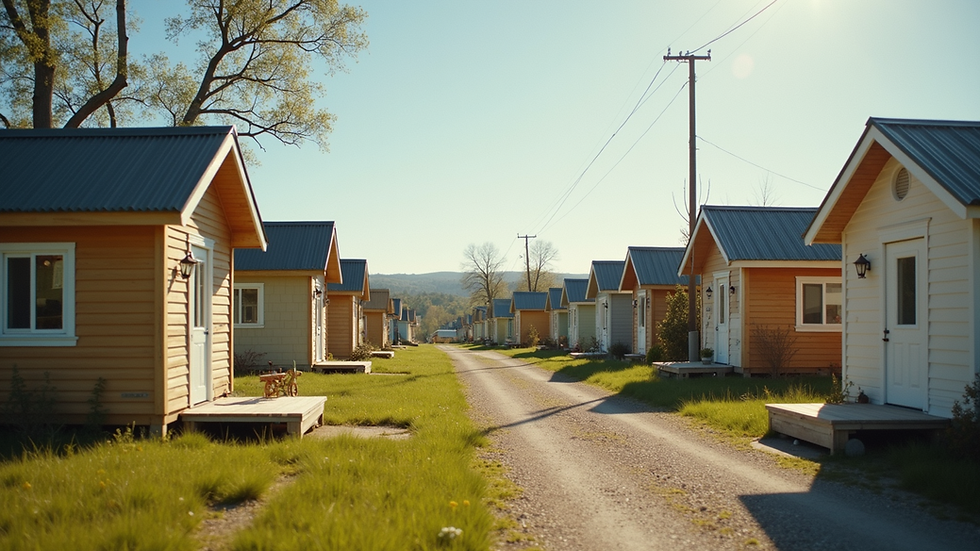Exploring Housing Options for Greater Independence
- Sunnysights

- Jul 4
- 4 min read
The journey towards greater independence often begins with finding the right housing option. Many individuals, including seniors and those with disabilities, are exploring alternatives that provide them with autonomy while ensuring safety and support. In this blog post, we'll delve into various housing options, their benefits, and key considerations to help empower individuals on their path to independence.
Understanding Housing Options
Housing options play a crucial role in enabling individuals to live independently. The range of choices can include anything from traditional homes to innovative housing solutions tailored for specific needs. Understanding these options requires assessing personal circumstances, preferences, and any support needed.
Independent Living Communities
Independent living communities are designed for seniors who want to maintain their independence while enjoying the security of community living. Typically, these communities offer various amenities, including meal services, social activities, and maintenance assistance.
These complexes often provide a variety of housing types, such as apartments or cottages, catering to diverse preferences and budgets. For example, many independent living facilities include:
Exercise and wellness programs
Organized social and recreational activities
Transportation services for residents

These communities also foster social interaction among residents, which can be vital for maintaining mental health and well-being as individuals age. Statistics indicate that seniors in independent living facilities often report higher satisfaction levels due to the sense of community and support.
Supported Living Housing
One innovative housing option is supported independent living housing. This type of housing provides individuals with disabilities the opportunity to live in their own homes with tailored supports. Unlike traditional group homes, supported living gives residents more control over their daily lives while offering necessary assistance.
Supported living arrangements can take many forms. They can include:
Individual apartments with personal support workers
Shared housing options where residents live together and share support services
Customized assistance programs based on individual needs

What sets supported living apart is that it focuses on enhancing individual capabilities and preferences. Providers work closely with residents to create support plans that align with their goals and lifestyle choices. This autonomy not only boosts confidence but also promotes empowerment.
Co-housing Arrangements
Co-housing is an increasingly popular housing model that emphasizes community involvement and shared resources. In a co-housing community, residents own their individual homes but share common spaces and responsibilities, creating a collaborative living environment.
Co-housing arrangements often include:
Shared kitchens and dining areas
Community gardens
Recreational facilities
The advantages of co-housing include reduced living expenses and a strong support network. Residents often find help in day-to-day activities and emotional support, which can be especially beneficial for those transitioning to new living situations.

Statistically, co-housing communities report lower levels of loneliness and higher satisfaction rates among residents. Sharing not just living space, but responsibilities such as cooking and organizing events fosters a sense of belonging and support.
Tiny Homes and Alternative Housing Models
The trend towards minimalism has led to the rise of tiny homes, which are smaller-than-average houses designed to maximize space and resources efficiently. These homes can be an excellent option for individuals seeking housing that requires less maintenance and costs less than traditional homes.
Key features of tiny homes include:
Energy efficiency through sustainable design
Mobility options, allowing residents to relocate if desired
Personalized designs that reflect individual lifestyles
Living in a tiny home allows for financial freedom, as many people can downsize and reduce their living expenses significantly. Tiny home communities are also emerging, providing social interaction and support among residents who choose this lifestyle.
Finding the Right Fit
Choosing the right housing option depends on many factors, including:
Personal preferences: Do you prefer a community setting or a more private living situation?
Support needs: What kind of assistance do you or your loved ones require?
Financial considerations: What is your budget for housing?
Research is essential when exploring these options. Visit potential communities, talk to residents, and gather as much information as possible to make informed decisions. Utilize online resources, local agencies, or consult with professionals in the field to aid your search.
Next Steps in Your Housing Journey
After evaluating various housing options, the next step involves taking action towards your chosen path. If you’re ready to explore independent living, consider these steps:
Assess Your Needs: Create a list of what you require from your living situation, including support services, location, and amenities.
Research Options: Utilize resources and websites to compare different communities and housing models.
Visit Properties: Schedule tours to get a feel for different environments and communities.
Consult Professionals: Speak to housing counselors or experts who can guide you based on your specific needs.
Finding the right housing option can be an empowering step toward greater independence. With the right support and information, you can create a living situation that enhances your life and fosters self-sufficiency.

By exploring diverse housing options, individuals can discover a lifestyle that aligns with their needs and fosters independence. The path to greater autonomy is not just about living arrangements; it’s about finding a supportive environment where one can thrive.




Comments